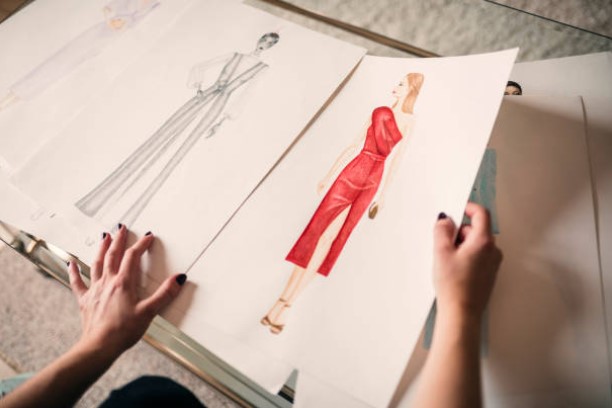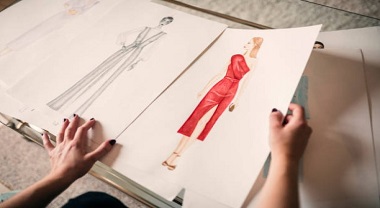Fashion Copyright and Infringement
The recent controversy involving French fashion house Jean Paul Gaultier and TaTa Top, known for their rather distinct bikini prints, has brought the issue of fashion copyright to the forefront again. An area still evolving in international as well as national contexts, fashion copyright is gradually gaining more and more importance as the fashion industry comes up with new ideas and concepts.
To understand copyright in the field of fashion, it is worth understanding the various doctrines to assess whether a work is copyrightable or not.

Sweat of Brow Doctrine:
While there are quite a few doctrines relating to whether, and to what degree, there must be originality and creativity in a work seeking copyright protection, in India the position followed for a long time was in accordance with the doctrine of “sweat of brow”. The doctrine states that for a person to have copyright protection over his or her work, a high degree of originality or creativity is not required; it is sufficient for there to be diligence and effort put in by the creator of the work into the creation.
However, in another landmark judgment in the field of copyright, there was a shift from the earlier belief that only originality was required to acquire copyright protection over work, to the current belief that the creation must also possess some level of creativity in order to qualify as intellectual property.
Modicum of Creativity:
In the case of Feist Publication Inc. v. Rural Telephone Service, there was a shift from the doctrine of “sweat of brow” to “modicum of creativity”. In this case, the Supreme Court of the United States held that along with originality, there must also be a degree of creativity in the creation under scrutiny, putting forth the test of “creative originality”.
Till now, this article has focused on the ambit of copyright protection in a relatively generic manner. However, it is also important to assess the position of copyright protection offered to fashion designers specifically and the scope of the same.
What is the Indian take on originality v. creativity?
Indian courts, for the longest time, followed the doctrine of “sweat of brow”, upholding the belief that a work requires only due diligence and effort, rather than originality and creativity in order to be granted copyright protection. In fact, in the case of Burlington Home Shopping v. Rajnish Chibber, the court held that compilations are also copyrightable, following in the steps of SCOTUS.
However, even then, the degree of novelty required in work was not so low as to allow everyone to get copyright protection for their artistic work. In the case of Indian Express Newspaper (Bombay) Pvt Ltd v. Jagmohan, when the question was whether a news article can have copyright protection, the High Court of Bombay clearly stated that natural happenings and events cannot be the copyright of the person who first reported the incident.
However, in 2003, with the case of Eastern Book Company v. D.B. Modak, the Supreme Court of India took the stance that along with effort and due diligence, a modicum of originality and creativity should also be present in the creation in question. In the aforementioned case, it was SCC, the Supreme Court Case reporter who alleged infringement of copyright by other websites who copied and took their painstakingly set-up content, for instance, headnotes, summaries and case references. In this paradigm-shifting judgment, the Court introduced the principle of “minimum requirement of creativity” in order to acquire copyright protection over an artistic work.
Copyright Act or Design Act?
The Design Act, 2000 [“the 2000 Act”] provides protection to various aspects of the design in question, like the pattern, colours or even lines on the design. This will remain in force for 10 years from the date of registration but can be extended for another 5 years, subject to certain conditions. However, the catch lies in this very statement; without valid registration, a design cannot be protected from imitation and piracy by the general public.
This is where the appeal in fashion copyright lies; even without registration, an artist can sue for imitation of their sketches and drawings as stated clearly in the case of Burroughs Wellcome (India) Ltd. v. Uni-Sole Pvt Ltd. and Anr and reiterated in a slew of Indian judgments, like Sanjay Soya Pvt Ltd v. Narayani Trading Company and Asian Paints (I) Ltd v. M/s Jaikishan Paints & Allied Products.
In general, a copyright protects the original ideas and concepts of, but not limited to, authors, producers and designers. This encourages further innovation and stimulates the minds of creative people with the incentive of exclusive protection. With a specific focus on fashion designs, it is very pertinent to look at the different provisions of the Copyright Act, 1957 [“the 1957 Act”] and the way they intertwine with the provisions of the 2000 Act.
It would be remiss to fail to briefly discuss Section 2(c) of the 1957 Act which defines an “original artistic work” and how it is different from a “design” under the 2000 Act. An artistic work as contained under the 1957 Act includes drawings like diagrams, charts, plans; paintings; and other works of artistic craftsmanship. Sub-section (iii) vastly widens the field of work which can be considered an artistic work and thus acquire copyright protection for the same. In addition, as Section 2(d) ofthe 2000 Act explicitly excludes “artistic work” from its scope, they can only be registered under provisions of the 1957 Act.
There are three different scenarios which need to be looked at in this regard.
Firstly, when talking about a design which is capable of being registered under the 2000 Act and possessing valid registration according to the applicable provisions, that design will get copyright protection only under the Design Act for 10+5 years.
Secondly, when a design is capable of being registered under the 2000 Act but is not actually registered under the same, it is open to being protected under the 1957 Act, till the 50th reproduction of that design by an industrial process.
Lastly, when a design is not capable of being registered under the 2000 Act due to it being an original artistic work, it will acquire copyright protection under the 1957 Act and will remain active during the lifetime of the author+60 years after their death.
While there are quite a few judgments on the aspect of fashion copyright and “original artistic work”, one of the most prominent involves famous designer Mr. TarunTahiliani as a plaintiff.
Rajesh Masrani v. Tahiliani Designs Pvt. Ltd.
In this landmark case, examining the scope of protection offered by fashion copyrights to fashion designers with respect to “artistic work”, the plaintiff sought protection over his designs and sketches, which were being imitated by the defendant. The question to be decided by the court was whether the drawings and patterns of the plaintiff qualified as “artistic works” under the1957 Act.
Herein, the Court considered the evidence put forth by the Plaintiff in support of his contention that the garments he designs are original artistic work under Sections 2(c)(i) and 2(c)(iii) of the 1957 Act. He also brought within the purview of intellectual property the sketches made during the designing process, the patterns printed and embroidery done on the textile as well as the catalogues brought out by him and his label.
After considering the rival contentions as well, the Bench held that, firstly, the Plaintiff’s garments were well within the ambit of “artistic work” under the 1957 Act; and secondly, there was piracy of copyright by the Defendants in the present case.
The Court also stressed on the fact that copyright does not need to be registered in order to be enforceable. In this regard, the court referred to Section 44 of the1957 Act and Section 48 of the Registration Act, 1908, which when read together make it clear that registration of a copyright is only optional; even without registration, the work would be protected against infringement and imitation.
Conclusion:
In the ever-evolving world of Intellectual Property, fashion copyright is still a relatively less conspicuous field, but that makes it all the more significant. We started this article with a reference to the controversy between a big fashion house in France and a relatively small clothing store. Companies like the former have resources galore, including but not limited to, investors from around the world and celebrities endorsing their clothes and brand. However smaller stores have to rely on their creativity and effort to create a niche for themselves. In such a scenario, fashion copyright is, arguably, the most precious resource available to them.
However, there is a stark dearth of awareness and strict implementation of the protection offered by such copyrights. If big fashion brands piggyback on the original ideas and concepts of small stores, the very purpose of providing protection to intellectual property is obliterated. It removes the incentive provided to artists to create more original works and gives a push to the economy in turn.
Rights in the realm of intellectual property are interconnected with all facets of a country’s performance. It encourages economic advancement and the opportunity to enter into global markets and interact with international players as well. It is also an undeniable fact that the world of fashion is a booming industry with the introduction of artistic works happening regularly, providing an easy pathway for countries to enter the stage of multi-regional contenders.
With this in mind, it is clear fashion copyright is one of the ways forward for a country’s growth. A greater incentive to fashion labels and designers through infringement protection will propel the revenue of the country to a new height and failure to do so can be our Achilles heel. As encapsulated by the fashion mogul Coco Chanel,
“Fashion is not something that exists in dresses only. Fashion is in the sky, in the street. Fashion has to do with ideas, the way we live, what is happening.”
Author– Garima Chauhan- Legal Intern at IP & Legal Filing, in case of any queries please contact/write back to us at support@ipandlegalfilings.com.



